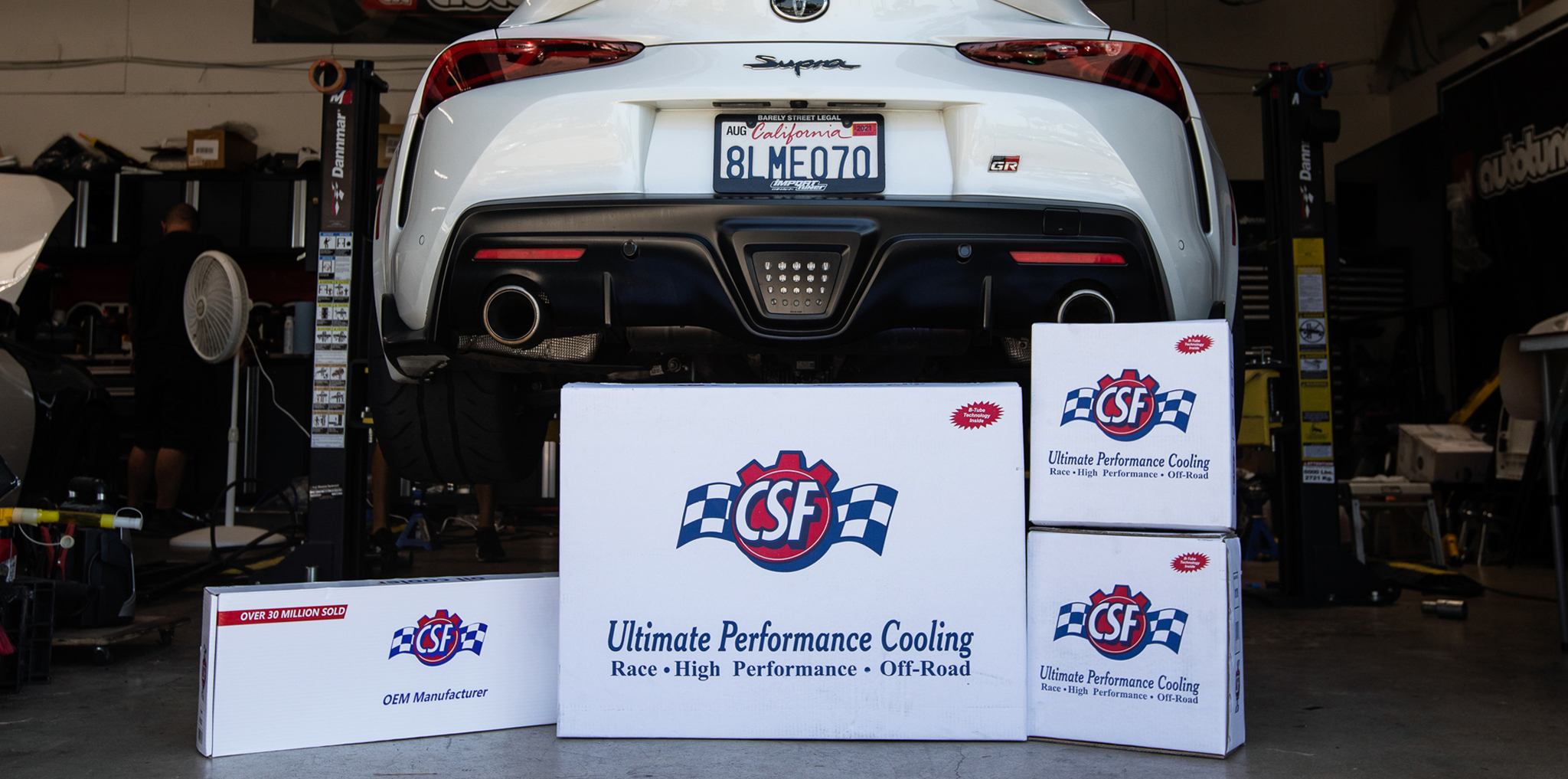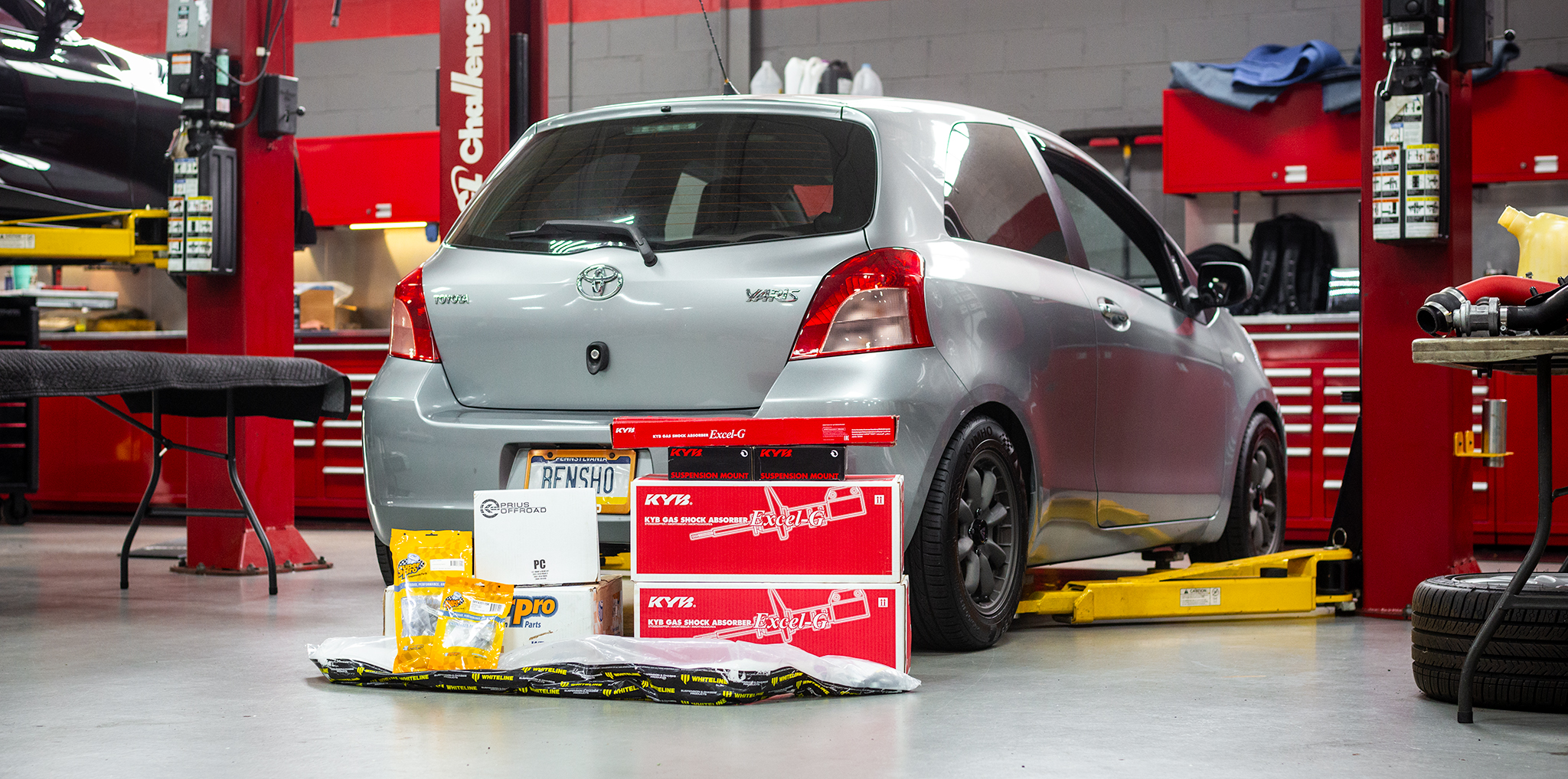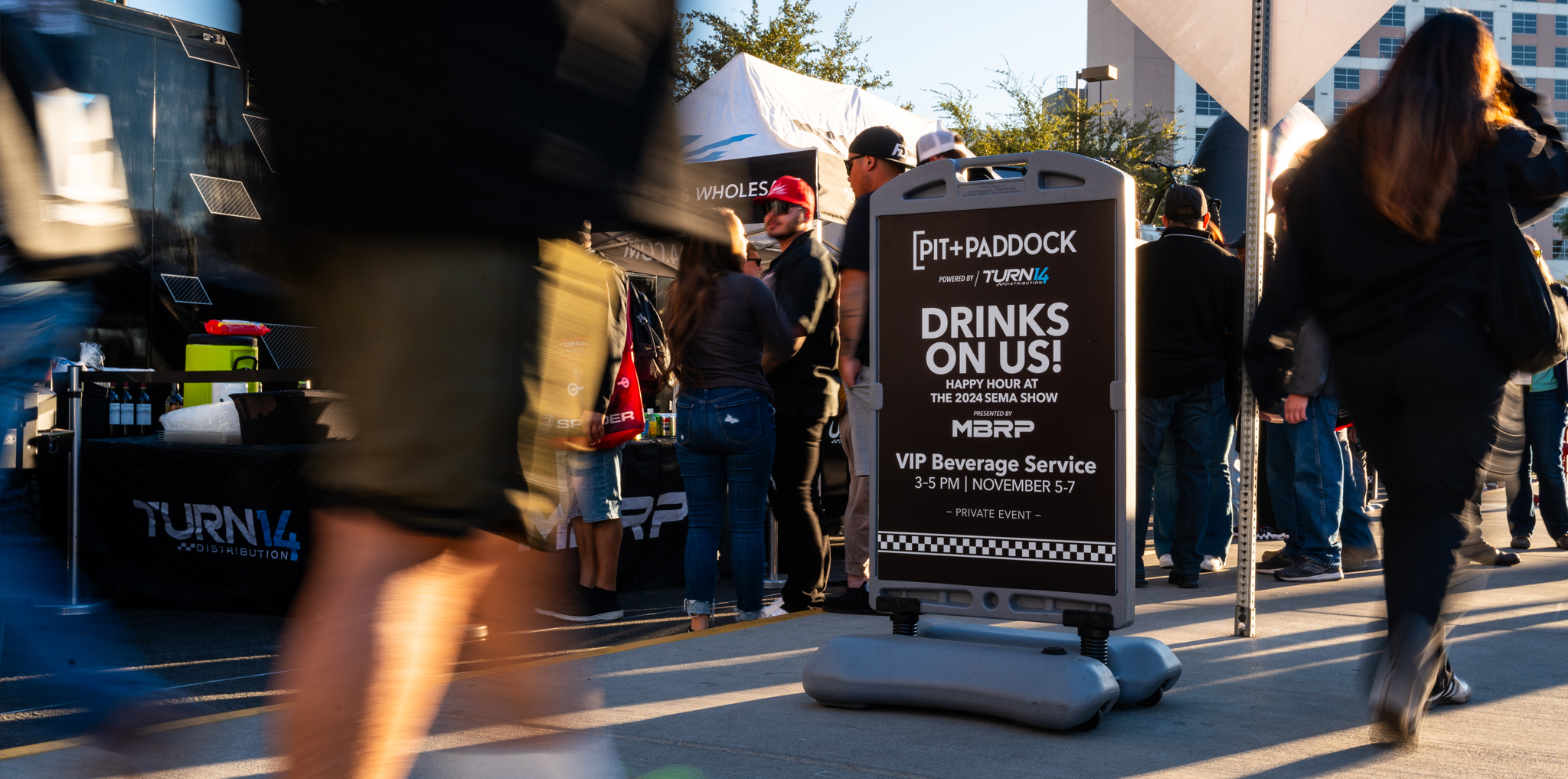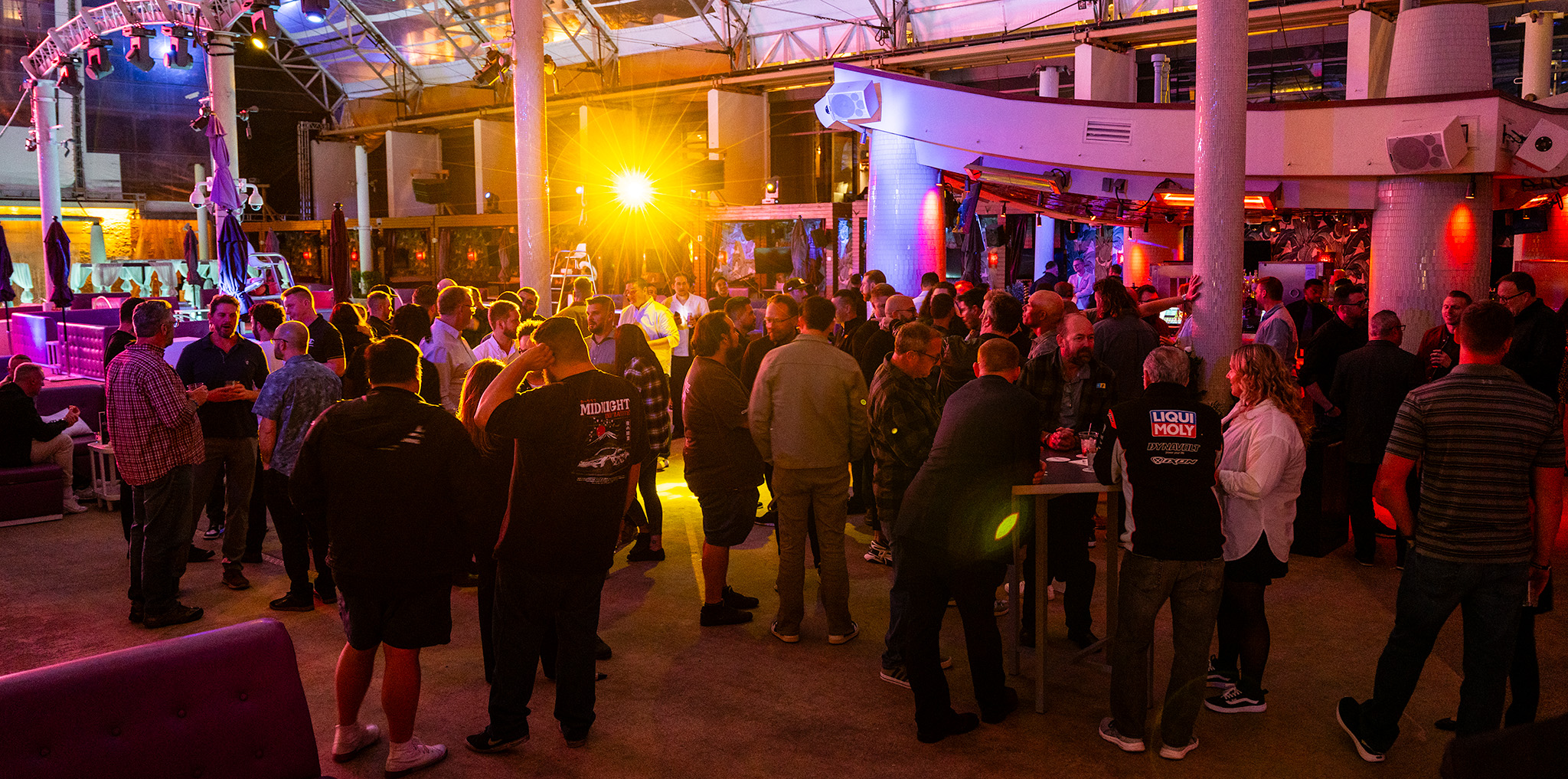- There are close to 20,000 Toyota GR Supras on U.S. roads today since its launch in 2019.
- For owners who frequent the track and push their modified fifth-generation Supras harder in warmer climates than the average owner, it’s not uncommon to experience sluggish performance or limp mode.
- CSF developed a four-piece cooling package to address this issue and provide a track-proven solution, so we decided to install and test one out on our own project car.
Does your Toyota GR Supra really need a $1,800 cooling package? Most A90/A91 owners that commute in their Supra every day don’t need to bother asking the question; however, if hitting track days and adding more boost and horsepower is on your agenda, then supplementing your turbocharged B58 with the appropriate cooling upgrades isn’t just optional, but necessary.
THE 4-YEAR A90 SUPRA OWNER
This August, I will have owned my 2020 Toyota GR Supra Launch Edition for four years (time flies!). Despite all the criticism the BMW-based, DCT-equipped Supra received, I’ve had nothing but great things to say about the car, from taking it on 2,400-mile road trip to Pikes Peak to pushing it at track events such as Auto Tuned’s Starting Grid. While it might look heavily modified on the outside, there are not a lot of performance mods, and I’m totally okay with that. Out of the box, the Supra hits 0-60mph in four seconds with ease courtesy of its 335hp, 365 lb-ft of torque B58 inline-six. I stayed away from swapping out the turbo; however, I did add an Akrapovic titanium exhaust, AMS downpipe, and Eventuri carbon fiber intake. The last piece of the puzzle was upgrading the tune. Evasive Motorsports plugged in the protuningfreaks Bootmod3 91-octane tune that leveled me up to 415whp.
Sidenote: I don’t live my life a quarter-mile at a time or participate in any foolish highway battles so this was more than enough power to push me around the track especially when combined with a proper suspension, wheel, and tire setup.
WHEN THE SUPRA GETS HOT
I’ve had buddies who are pro drivers and instructors rip on my car and they all agree it’s dialed-in and extremely fun to drive; however, if there was one weakness it had, it was beating the heat (coincidentally a common complaint from many BMW M owners). I was lucky enough to never experience limp mode; however, it is a common problem with Supra owners that are continually hitting the track and continuously pulling to redline. During my previous lapping days at Southern California’s Streets of Willow and Buttonwillow Raceway, it wasn’t out of the ordinary for ambient temps to hit triple digits. After multiple sessions, I noticed that the power delivery was held back and the gear shifts started to struggle. It was time to consider a proper cooling solution, which brings us to the review of the CSF Competition Spec cooling package.
DEVELOPED IN MULTIPLE MOTORSPORT PLATFORMS
For many companies in the aftermarket, the GR Supra was viewed as a new and exciting platform. In CSF’s case, they had customers from around the world hitting them up to provide better cooling solutions. The stock system isn’t able to keep the engine and transmission cool as more power is added. We’re talking guys that are going for eight-second quarter-mile runs like Titan Motorsports and Ekanoo Racing, aiming for lap records at time attack events from shops like Art of Attack and Studio RSR, and endurance road racing teams like the folks at Toyota Southwest. By working and testing closely with CSF’s enormous network of motorsport clientele, the entire Competition-Spec cooling kit was developed. The resulting four-piece kit comes with the heat exchanger, a dual-core DCT transmission oil cooler, and two auxiliary radiators. Even after three years of being on the CSF shelves, the GR Supra kit is still one of its best sellers and has been validated by the world’s fastest GR Supra builds time and time again. Ravi Dolwani, the owner of CSF, helps us break down the components:
HEAT EXCHANGER
When we started looking at the new Supra, the front fascia and bumper opening for the car are limited. The cooling components are also stacked back-to-back with the transmission cooler, followed by the heat exchanger, and then the engine radiator. As a result of this stacking (and the super dense cores), there’s not enough surface area that gets airflow. It’s no surprise that in hot weather situations, the car will start cutting power, especially during back-to-back pulls. You start to really get high IATs and the system can’t keep up.
We developed the heat exchanger (8154) first since it’s the first thing to keep your car from going into limp mode. The problem with the Supra is that it’s not getting better cooling because the airflow isn’t getting to the radiators, so against the traditional rule of thumb, dense isn’t better in this case. By making our heat exchanger bigger, we added 30-40% more capacity and opened the fin height spacing allowing for more airflow.
OIL TRANSMISSION COOLER
Our transmission cooler (8183) is a cool design. It’s two coolers stacked together which basically doubles capacity, and they’re made slightly taller. Despite the previously mentioned stacking, the air is able to pass through because of the less dense heat exchanger. This cooler is really good for track guys since the Supra’s transmission shifts often get sloggy from repeated abuse, especially for guys with a transmission tune, which upgrades the clutch pressures.
AUXILARY RADIATORS
The Supra has two auxiliary radiators, left and right. One is helping the turbo system while the other is a supplemental cooler to the heat exchanger. Our radiators (8179) are designed for higher performance and efficiency. One is working to help the engine stay cool while the other provides additional cooling for the radiator and turbo system.
INSTALL AT AUTO TUNED
I took my GR Supra to the trusty guys at Auto Tuned. It’s been the main destination for several of my previous projects and has been no different for my Supra. Young Tea at Auto Tuned explained that the installation of the CSF cooling package isn’t for beginners at home; it’s a 5-6 hour job if you have a good amount of experience working on cars. Taking the front end off, removing the trans coolers, and burping the coolant are time-consuming tasks if you don’t have all the right tools.
SAM’S CONCLUSION
So, did I really need a cooling package that nearly ticks the $2K mark? After testing at the Streets of Willow on a 105-degree day, the car didn’t show any weaknesses. Mission accomplished, I’d say. I perhaps could’ve gotten away with just doing the heat exchangers and trans cooler — Ravi tells customers that you can order items piece-by-piece — but my thinking is if you’re going to take the car out of commission to upgrade the cooling system, might as well do it all at once.
Ravi went on to advise me that most Competition-Spec customers are pushing 500+ horsepower with a stage 2 turbo kit or running flex fuel or E85, but the insurance of having better cooling is invaluable. I wouldn’t stop other GR Supra owners from following the same route I did; we all drive our Supras pretty damn hard, and it’s better to be safer than sorry when you’re hitting the track or canyons like me on hot summer days.





















































